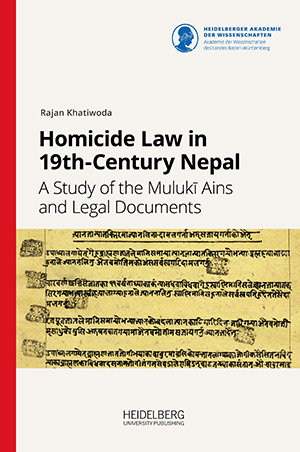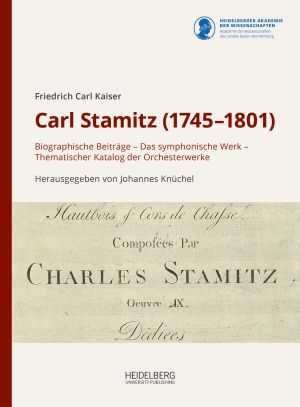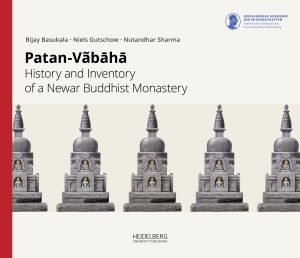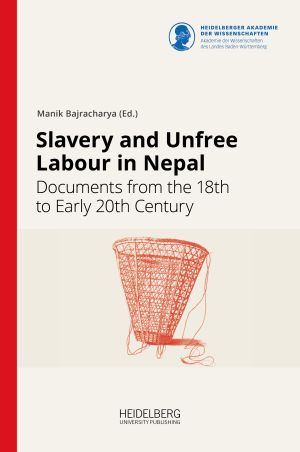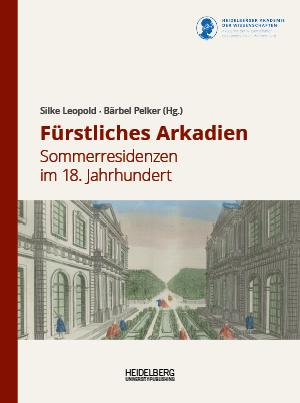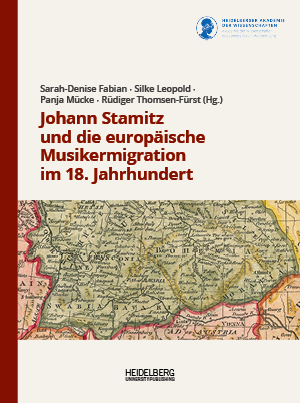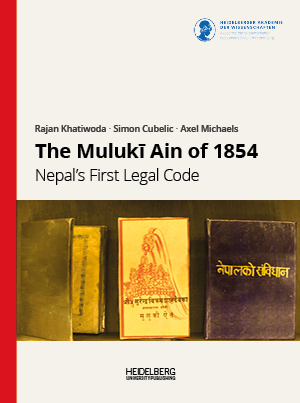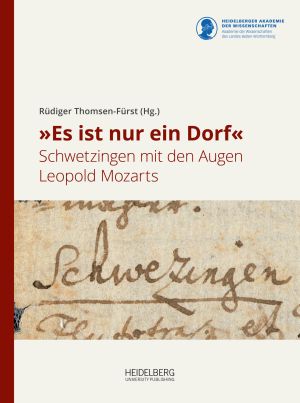Academy
The Heidelberg Academy of Sciences and Humanities is an independent, non-university research institution and the state academy of Baden-Württemberg, Germany. As of 2018, the Academy now also distributes scientific and academic material related to its research projects through the university’s publishing house, Heidelberg University Publishing (heiUP). This includes publications from a wide variety of disciplines – from musicology to Southeast Asian cultural studies and much more. The aim is to provide all researchers, scholars and people with an interest in science around the world with free, open access to the latest research findings.
The Heidelberg Academy of Sciences and Humanities was established in 1909 in the tradition of the Kurpfälzische Akademie (Academy of the Electoral Palatinate), founded in 1763 by Elector Carl Theodor. It operates as a modern scholarly society and a non-university research institution. Selected as outstanding representatives of their respective fields, the members of the Heidelberg Academy meet regularly to debate academic issues. Thanks to the diversity of the specialists that the Academy brings together, it offers a virtually unmatched platform for interdisciplinary exchange and collaboration across faculties, schools and universities. Focused on sustainability, its basic research is currently focussed on the field of cultural studies and the arts.
The members of the respective project-accompanying commissions are responsible for the quality assurance of the publications from the research units that appear in series of the Academy. These commissions are composed of renowned external scientists and members of the Academy.
The Heidelberg Academy of Sciences and Humanities publishes the latest scientific findings from its exceptional research projects through Heidelberg University Publishing. As a state academy, it uses the open access model to ensure scientists and scholars around the world have free access to the latest research insights.
Published so far
Caesarius von Heisterbach: Libri VIII miraculorum – Die „Acht Wunderbücher“: Auswertung, Edition, Übersetzung und Kommentar
The Cistercian Caesarius of Heisterbach (ca. 1180-1240) is one of the most renowned authors of the Middle Ages. His 'Eight Books of Miracles' (Libri VIII miraculorum) are a collection of instructional, edifying and deterrent narratives, encompassing tales of saints and demons, of humans and animals, of minor miracles and major misfortunes. Through his narratives, Caesarius transports his audience on a journey from the Rhineland to the Baltic and to Jerusalem, offering a multifaceted depiction of the political, social and religious developments in the 13th century.
The new edition of the 'Eight Books of Miracles' comprises an annotated version of the Latin text, a new German translation, and an analysis of the work and its manuscript tradition.
Images, Gestures, Voices, Lives. What Can We Learn from Paleolithic Art?
The concept of ‘Palaeolithic art’ and its study have changed considerably in recent decades. The modern notion of ‘art’ is cross-culturally and diachronically problematic. The phenomenon cannot be reduced to material visual culture, but also has acoustic, haptic and other dynamic aspects. It must be understood as a variety of processes that can encompass both the everyday and the extraordinary. In this volume, archaeologists, philosophers and anthropologists approach ‘Palaeolithic art’ from different perspectives, including its conceptualisation, aesthetics, relations to art history and art brut. The contributions deal with the challenge of materiality, evolutionary aspects, physical re-enactment by actors, digital technologies as a means of interpreting art objects, and the protection of cultural heritage. The volume offers innovative insights into past practices and contemporary ideas and approaches related to Palaeolithic art, based on careful empirical research combined with reflective and sophisticated theoretical approaches.
Lords of the Mountains: Pre-Islamic Heritage along the Upper Indus in Pakistan
With his authoritative monograph, Lords of the Mountains. Pre-Islamic Heritage along the Upper Indus in Pakistan, Harald Hauptmann brought decades of research in the Karakoram region of northern Pakistan to an impressive conclusion. In a sense, this book (completed before his sudden death in 2018) is the scientific legacy of the last phase of his career. The book was edited by Luca M. Olivieri of Ca’ Foscari University of Venice, head of the ISMEO and Ca’ Foscari’s Italian Archaeological Mission in Pakistan.
(after the foreword by H. Parzinger)
Homicide Law in 19th-Century Nepal: A Study of the Mulukī Ains and Legal Documents
The main ambition of this book lies in a detailed analysis of the formation and enforcement of Nepal’s Mulukī Ain of 1854, specifically focusing on the provisions regarding homicide within the Mulukī Ains of 1854 and 1870. This study also examines contemporaneous legal records, revealing the complexities of the Ain’s implementation. The articles on homicide serve as a microcosm illustrating the broader evolution of Nepal’s legal code, which departed from outdated punishments like genital mutilation and introduced fines and imprisonment instead. Still, the innovations introduced into the Ain of 1854 were not uniformly progressive. The Ain in its various stages of development thus showcases the complex ways in which legal systems inevitably undergo transformation.
Drumming in Bhaktapur: Music of the Newar People of Nepal
This groundbreaking publication offers a unique resource of information about one of the most glorious and diverse musical cultures of the Himalayas. The numerous drum traditions of Bhaktapur in the Kathmandu Valley are a vibrant aspect of traditional Newar culture that saw its heyday between the thirteenth and eighteenth centuries. The three Malla kingdoms of Bhaktapur, Lalitpur and Kathmandu competed in art, architecture, music, dance and opulent town rituals celebrating the presence of the gods. Music served as a portal between the human world and the realm of the gods.
This study documents the role and repertoires of the different percussion genres in a transcribed and commented form for practical use and as a teaching aid. It also includes a dictionary of Newari terms related to music. As it focuses on the musical life of Bhaktapur during the decade starting from 1983, it could serve as a point of reference for comparison with the present situation. This publication is an outstanding contribution to the preservation of Newar culture.
This publication includes electronic supplementary material (documentary films and audio
examples). An overview can be found on page 403.
Carl Stamitz (1745–1801): Biographische Beiträge – Das symphonische Werk – Thematischer Katalog der Orchesterwerke
Carl Stamitz (1745-1801), Johann Stamitz's eldest son, is well known for his works, as his compositions can be found on numerous recordings and concert programmes in today's music scene. Musicologists though do not pay the same attention to this composer, who came from the ranks of the court musicians of the Electoral Palatinate. The dissertation by Friedrich Carl Kaiser (1931-2008), submitted in 1962, is still the only monograph that systematically deals with his life and his orchestral music, which was a major part of his creative work. It is a standard work that rightly appears in every bibliography on the subject. Up to now it has only been possible to view the compulsory typescript copies of the dissertation, which are distributed among a few libraries and which differ in detail from one another. The reason for this is the somewhat unusual genesis of the text, as Kaiser repeatedly made changes and additions to his Stamitz monograph over a long period of time. The present edition, which also includes Kaiser's personal copy from his estate, now provides musicology researchers with a reliable edition of this fundamental text.
Patan-Vãbāhā: History and Inventory of a Newar Buddhist Monastery
This volume presents the religious, architectural, and textual background of Vãbāhā, one of the 16 main monasteries of Patan, located in one of the three royal cities of the Kathmandu Valley in Nepal. The history of the Buddhist monastic courtyard and its objects is presented along with 42 inscriptions, dating from 1596 CE to 2021.
Slavery and Unfree Labour in Nepal: Documents from the 18th to Early 20th Century
The topic of slavery is largely under-represented in the historiography of Nepal. This source book, aware of this disparity and wishing to encourage future studies on the topic, provides the reader with editions, translations and a study of selected documents and legal texts of Nepal from the period of the eighteenth to the early twentieth century. These sources are concerned with such different aspects of slavery as donations, transactions, bondservitude, forced labour, emancipation, and law.
Fürstliches Arkadien: Sommerresidenzen im 18. Jahrhundert
In academic research, princely summer residences are regarded as places of longing, where rulers sought to realize their dream of an earthly paradise and escape the constraints of courtly ceremonial. Traditionally, this research has been based in history of art. What music was made in the summer residences, and how it might have differed from that of the main residence, has not yet been systematically studied. The conference made a contribution to this by examining the musical life at selected European summer residences of the eighteenth century and relating it to one another. The individual contributions present the respective situations of the cultivation of music at selected summer residences in the German-speaking countries as well as in Italy, Spain, England, Sweden and Russia.
Johann Stamitz und die europäische Musikermigration im 18. Jahrhundert
This publication documents the papers presented at the symposium "The Stamitz family and European musician migration in the 18th century", which took place in Schwetzingen on 17 and 18 June 2017 on the occasion of the 300th birthday of Johann Stamitz. The conference was organised by the Research Centre for the History of Southwest German Court Music of the Heidelberg Academy of Sciences and the Mannheim State University of Music and Performing Arts.
Johann Stamitz, a figurehead of Mannheim’s court music, and his family are exemplary for the musician migration of the eighteenth century in Central Europe. Based on this, the papers will examine various aspects of the topic. It was part of the conference’s concept to offer not only experienced experts in this field but also young scholars a platform for their own research and for the presentation of the results.
The Mulukī Ain of 1854: Nepal’s First Legal Code
The Mulukī Ain of 1854—the law code with constitutional features drafted at the initiative of Prime Minister Jaṅga Bahādura Rāṇā—is the foundational legal text for modern Nepal. It covers almost every aspect of public, criminal, private and religious law, ranging from the organisation of the state and courts to murder and other delicts, the workings of the caste system and the joint family, matters of purity and penance, customary law, widow-burning and witchcraft. As such, the Mulukī Ain is a unique source not only for the political, social and economic life of 19th-century Nepal, but also for the place of traditional Hindu jurisprudence in South Asian legal cultures.
»Es ist nur ein Dorf« : Schwetzingen mit den Augen Leopold Mozarts. Begleitpublikation zur Ausstellung im Karl-Wörn-Haus, Museum der Stadt Schwetzingen, vom 28. April – 28. Juli 2019 aus Anlass des 300. Geburtstages des Komponisten
This volume, which accompanies the exhibition of the same name, honours Leopold Mozart (1719-1787), who was not only a musician, composer and teacher, but also a well-informed observer of his time. His letters contain numerous details on music and cultural-historical themes, and his notes on his stay in the summer residence of Schwetzingen in the Palatinate are invaluable. The authors investigate this information and relate it to the knowledge of their respective disciplines. The result is a comprehensive picture of the Electoral Palatinate summer residence of 1763, a music-historical focal point in the third quarter of the eighteenth century.
Süddeutsche Hofkapellen im 18. Jahrhundert: Eine Bestandsaufnahme
Since the Middle Ages, next to churches the courts have been the most important employers for professional musicians. The important role of court music in European and particularly German music history has not been reflected in the efforts made by musicological scholarship in the past. Although there are numerous studies on particular courts, comparative studies are still lacking.
This publication documents the current state of research on the most important court chapels, as well as selected smaller aristocratic chapels in southern Germany during the eighteenth century.
Studies in Historical Documents from Nepal and India
This volume is the outcome of the conference “Studying Documents in Premodern South Asia and Beyond: Problems and Perspective”, held in October 2015 in Heidelberg. In bringing together experts from different fields—including Indology, Tibetology, History, Anthropology, Religious Studies, and Digital Humanties—it aims at exploring and rethinking issues of diplomatics and typology, the place of documents in relation to other texts and literary genres, methods of archiving and editing documents, as well as their “social life”, i.e. the role they play in social, religious and political constellations, the agents and practices of their use, and the norms and institutions they embody and constitute.
The book is the first volume of the Documenta Nepalica – Book Series, published by the Heidelberg Academy of Sciences and Humanities in collaboration with the National Archives, Nepal.





